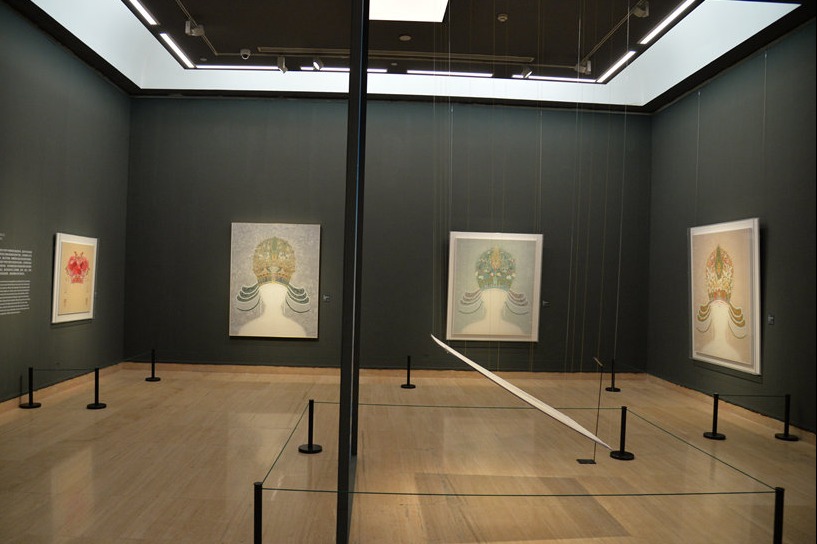Quanzhou meets Micronesia: Illuminating new paths for cultural dialogue

Quanzhou, an ancient Chinese trading port with a history spanning over a thousand years, has witnessed the glory of the ancient Maritime Silk Road, while Micronesia has witnessed the voyage of the Austronesian language family throughout millennia. Though separated by the vast Pacific Ocean, centuries of maritime interaction have brought these two regions together. As we continue navigating the cultural interplay between the two parties throughout all ages —understanding these influences can foster greater appreciation for diverse spiritual journeys while promoting respectful engagement with both countries.
Echoes of the past: From ancient trade to modern partnership
Throughout its long history, Quanzhou has been the starting point of the ancient Maritime Silk Road, and one of China’s first trade ports opened to the outside world, carrying not only goods but also values between civilizations. During the Song (960-1279) and Yuan (1271-1368) dynasties, merchants from all over the world gathered here to trade porcelain, spices and other goods. Similarly, the fearless Micronesian navigators—masters of the open sea—sailed between distant islands to trade precious stones as well as aquatic products across the vast Pacific Ocean.
These traces of cultural interplays not only provide us a valuable lens into the transformative encounters between Quanzhou and the Federated States of Micronesia, but also shed light on the intricate, multifaceted web of interactions that have shaped the social fabric of these two regions. By examining these cultural exchanges, we can gain a deeper understanding of how different cultures have influenced and been influenced by each other over time. Furthermore, today's Quanzhou is building upon this rich historical legacy by renewing its bond with the Federated States of Micronesia through a variety of modern economic partnerships. These partnerships, grounded in cultural reciprocity and sustainable development, are paving the way for a future of mutually beneficial collaboration between the two regions.
Following Quanzhou’s UNESCO recognition, the State of Kosrae in the Federated States of Micronesia nominated the Lelu Ruins, which is a 14thcentury navigation hub, for World Heritage status (FSM Government Press Release, March 2022). The Islamic-style stone carvings, which date back to the medieval period and were discovered in Quanzhou, are currently on display at the FSM National Museum (fsmgov.org), serving as a testament to the historical and cultural connections between the two regions. Similarly, replicas of Micronesian outrigger canoes are exhibited at the Quanzhou Maritime Museum, further highlighting the maritime heritage and cultural exchange that has taken place between Quanzhou and the Federated States of Micronesia over the centuries.
These collaborative efforts not only highlight the ancient maritime connections for the two regions but also promote cross-regional dialogue for the future development of cultural tourism, injecting vitality into the economic partnership between Quanzhou and Micronesia.
In 2022, Quanzhou’s Overseas Exchange Association and FSM’s Department of Culture signed a memorandum to protect their intangible maritime heritage (China-Pacific Island Countries Economic Development Forum, MOFA, October 2022). Since 2022, the Institute of Maritime History at Quanzhou Normal University has hosted a summer program every year to receive students from Micronesia, focusing on learning the documentary recording methods of Quanzhou's maritime trade in the Song Dynasty (Quanzhou Normal University's 2023 Annual Report). In return, the College of the Federated States of Micronesia sent two cultural heritage instructors to Quanzhou Normal University in 2023 to develop a course that would combine Micronesian oral navigation traditions with Fujian's maritime archaeology research.
?
?Illuminating new paths: From current connections to future collaborations
Quanzhou, a city with rich cultural diversity, is once again at the frontline of international collaborations. As it forges its ties with the Federated States of Micronesia, a country known for its stunning natural beauty and unique island cultures, a future with deep cooperation will surely be built upon their respective strengths.
As for future maritime collaboration, Quanzhou is working to normalize shipping routes between Quanzhou Port and major ports in Micronesia, such as Pohnpei Port, establishing a regional logistics node for the two regions. What’s more, Quanzhou is promoting the construction of the Smart Ocean Plan to share port information systems with Micronesia to improve ship scheduling, cargo tracking, and emergency response efficiency. It hopes to work with Micronesia in exchanging technologies in offshore fishing, building marine ranches, as well as promoting the integration of aquatic product processing and trade chains.
Another key area for future collaboration lies in education. Based on the academic ties officially established by the 2021 Memorandum of Understanding signed by Quanzhou Normal University (QNU) and the College of Micronesia-FSM (COM-FSM) (Press release of the Ministry of Education of the Federated States of Micronesia, October 2021), digital heritage preservation would be in high priority. A joint project proposal put forward in 2024 aims at creating 3D models of the Song Dynasty ship replica at Quanzhou Normal University and the ancestral canoes of the Federated States of Micronesia with the aid of the digital archaeology technology of Xiamen University (Quanzhou Normal University's International Cooperation Plan for 2023 - 2025).
Certainly, the prospects for multidimensional cultural collaborations are indeed promising. In the near future, the fusion of Quanzhou's Nanyin, an ancient southern Chinese musical tradition, with the traditional instruments of Micronesia, could potentially yield a series of distinctive music albums that blend the melodic nuances of both cultures. Furthermore, by integrating the graceful opera dances of Quanzhou with the vibrant rhythms of Micronesia, we may witness the emergence of exhilarating stage performances that captivate audiences with their innovative choreography.
In the realm of visual arts, the collaborative efforts of artists from Quanzhou and Micronesia hold the potential to create groundbreaking contemporary artworks. By merging the intricate techniques of Minnan woodcarving and Quanzhou's lacquer thread carving with the exquisite craftsmanship of Micronesia's shell carving traditions, these artists can forge a new aesthetic language that celebrates the diversity and richness of both cultures. Such collaborations not only foster cultural exchange but also contribute to the evolution of artistic expression in a global context.
When ancient Quanzhou navigators set sail for distant shores and finally meet Micronesia at the other side of the ocean, what they brought was not only silk and porcelain, but also a spirit full of cultural reciprocity and mutual trust. Now, as Quanzhou and Micronesia reinterpret this spirit to meet contemporary needs, their partnership illuminates a new path where cultural interplay would act as a generative force that allows both parties to “recharge” each other through the process of “collision and agreement”. As a Micronesian proverb goes: “The canoe moves forward when both paddles stroke together.”?Quanzhou and Micronesia, working hand in hand, are moving towards a common vision of cultural synergy and economic prosperity.
(Huang Shihai is the director of Research Center for Language Services and International Communication, Quanzhou Normal University; Wu Jingsen is a lecturer from the School of Foreign Languages, Quanzhou Normal University, serving as an interpreter on several occasions for official exchanges between Quanzhou and the Federated States of Micronesia; Zhao Shuo is director of Research Center of the Pacific Island Countries at The Academy of International and Regional Communication Studies in Communication University of China)
?





































